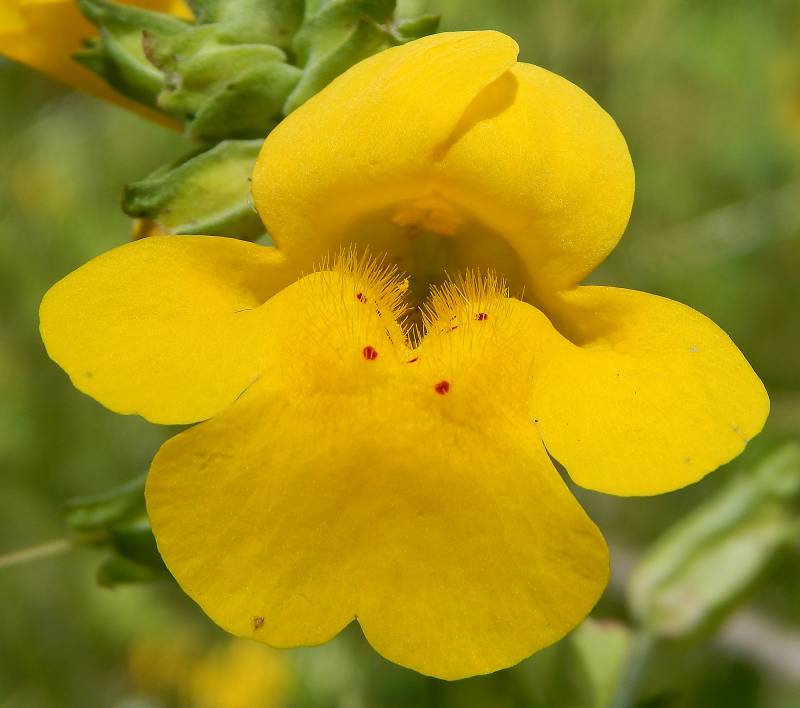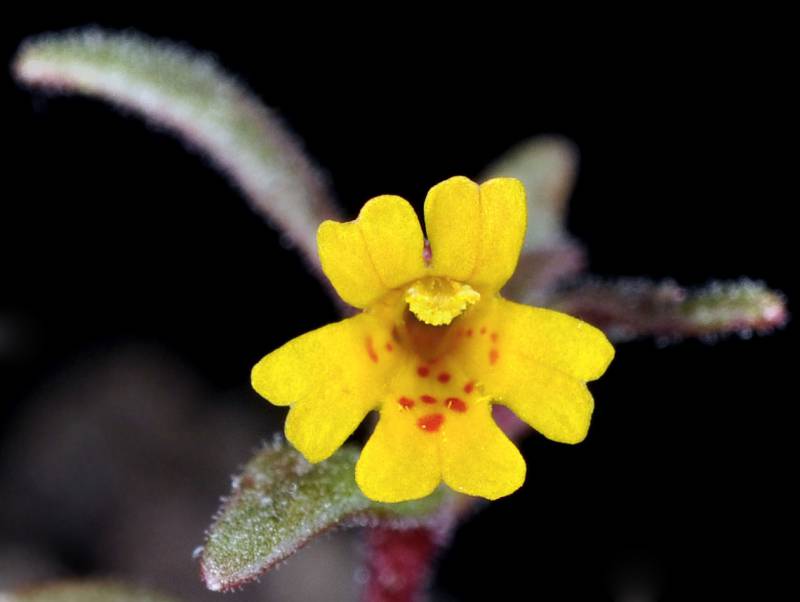Erythranthe decora
Erythranthe suksdorfii
sharp-leaved monkey-flower, showy monkey-flower
miniature monkey-flower
Leaves mostly cauline, basal leaves generally not persistent;
petioles 8-25 mm near base, 3-5 mm mid-stem, sessile distally;
blade ovate-triangular to ovate-lanceolate, typically 20-50 mm long and 10-30 mm broad, palmate venation with 5-7 veins, base rounded to truncate to shallowly cuneate, margins sharply toothed, apex acute, surfaces occasionally becoming glabrous, distalmost surfaces hairy as stems.
Leaves opposite, small and rather numerous, linear to narrowly oblong, mostly sessile and entire, 1- to 3-nerved from the base, up to 2 cm. long.
Axillary flowers generally 2-7, emerging from nodes at ends of stems; fruiting pedicels 18-35 mm, distalmost pedicels hairy as stems with hairs often barely deflexed;
calyx green with occasional red spots, ovoid, inflated, compressed across sagittal plane, 15-19 mm, hairy as stems, throat closing, lobe margins villous;
corollas yellow, throat commonly red-spotted, symmetric bilaterally, bilabiate;
tube-throat widely funnel-shaped, 18-26 mm, protruding 10-15 mm beyond calyx margin;
limb expanded 22-30 mm;
styles prominently hirsute to villous;
anthers not protruding, glabrous.
Flowers solitary in the leaf axils on pedicels under 1 cm. long, spreading and up-turned at the tip;
calyx glandular-puberulent, 3-5 mm. long, the 5 short teeth rounded;
corolla yellow, faintly spotted, 4-8 mm. long, only slightly bilabiate, the 5 lobes equal, notched at the tip, the throat narrow, under 2 mm. wide;
style longer than the calyx;
stamens 4.
Capsules 8-10 mm, included.
Capsule.
Erythranthe decora
Erythranthe suksdorfii
- Local floras:
BC,
OR,
WA
- Local Web sites:
Flora NW,
PNW Herbaria
WildflowerSearch
iNaturalist (observations)
- LBJ Wildflower Center
- SEINet
- Plants of the World Online
- Encyclopedia of Life
- Wikipedia
- Google Image Search
- Local floras:
BC,
CA,
OR,
WA
- Local Web sites:
CalFlora,
CalPhotos,
Flora NW,
PNW Herbaria
WildflowerSearch
iNaturalist (observations)
- LBJ Wildflower Center
- SEINet
- Plants of the World Online
- Encyclopedia of Life
- Wikipedia
- Google Image Search



